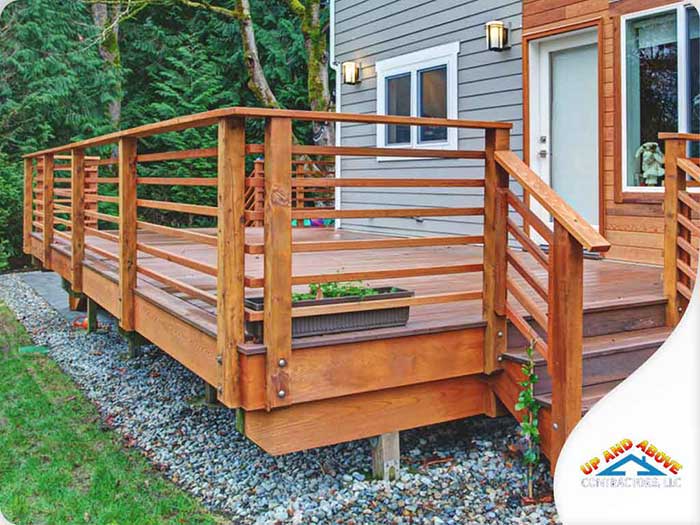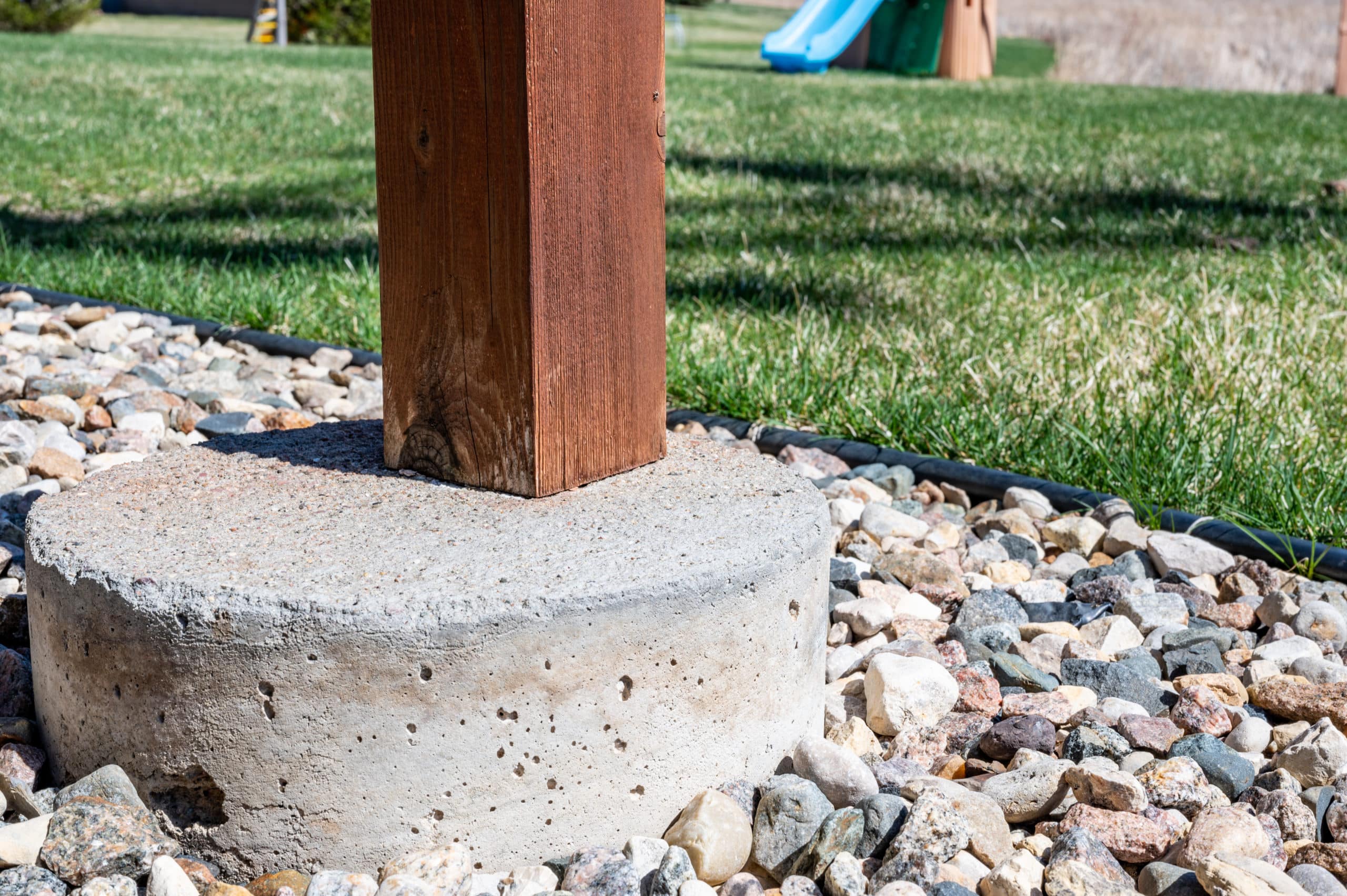Selecting the Right Deck Footings for Stability and Sturdiness
The long life and safety of your deck depend heavily on the kind of grounds you choose, as they give the necessary assistance and stability to stand up to the examination of time. In this discussion, we will discover the various types of deck grounds, take into consideration the essential aspects to consider when making a decision, and dive right into the pros and cons of various alternatives.
Kinds Of Deck Grounds
There are several kinds of deck footings that can be utilized, each offering special advantages and considerations. One typical sort of ground is the concrete pier ground. These grounds consist of a cylindrical hole loaded with concrete, which gives a strong structure for the deck posts. Concrete pier footings are fairly simple to mount and offer exceptional security, making them a popular choice for numerous deck tasks.
These grounds are set up by screwing them into the ground, which develops a protected structure for the deck. They additionally permit for easy change and progressing of the deck if needed.
Alternatively, some builders go with precast concrete footings. These grounds are constructed from resilient concrete and come in various forms and dimensions to suit various deck styles. Precast concrete grounds are convenient to set up and supply a stable base for the deck framework.
Finally, another option is the post-in-anchor footing system. This kind of footing includes driving a metal support into the ground and attaching it to the deck message. It offers versatility in terms of positioning the deck articles and is ideal for decks with light-weight frameworks.
When selecting the appropriate type of deck ground, it is important to take into consideration variables such as soil problems, deck tons, and local structure codes (Deck Footings). Consulting with an expert service provider or architectural designer can help make sure the proper ground is picked for a steady and secure deck
Factors to Take Into Consideration When Choosing Grounds
When choosing the suitable footings for a deck, it is essential to carefully think about numerous elements such as dirt problems, deck lots, and adherence to local structure codes. These aspects play a considerable duty in ensuring the security and durability of the deck framework.
The type of soil on which the deck will be constructed figures out the kind of footings required. On the various other hand, decks constructed on clay or large soils may require grounds that can suit the soil's tendency to expand and agreement.
Another important factor is the deck tons. The weight of the deck, consisting of the products made use of and any type of potential online lots such as furnishings or events, must be considered when choosing footings. The grounds have to be made to birth the weight of the deck and distribute it equally to avoid any architectural concerns or failings.
Lastly, adherence to neighborhood building ordinance is critical. Building ordinance vary from area to area, and it is crucial to comply with the particular needs set by the regional authorities. Deck Footings. These codes ensure that the deck is developed securely and satisfies the required standards for architectural stability and load-bearing capability
Concrete Grounds: Cons and pros

Concrete grounds provide several advantages and downsides when made use of as the foundation for a deck. On the positive side, concrete grounds offer outstanding stability and sturdiness. Concrete is a strong and stiff product that can support hefty tons and stand up to different climate conditions. It likewise has a long life-span, making it a trustworthy choice for lasting use.
One more advantage of concrete footings is their versatility. They can be put right into different forms and sizes to fit various deck styles and configurations. Concrete grounds can be personalized to sites fit the certain demands and needs of the deck framework.
However, there are likewise some drawbacks to making use of concrete grounds. One major drawback is the price and labor associated with their installation. Concrete footings need excavation and frequently require the help of hefty equipment. This can raise the total expense of the deck job and might need professional assistance.

Helical Piers Vs. Sonotubes: Which Is Better?
In considering the foundation options for a deck, the comparison between helical piers and sonotubes is vital in establishing the superior selection. Helical piers, also referred to as screw piles, are steel shafts with helical plates connected to them. They are turned into the ground making use of hydraulic equipment, giving a secure and sturdy structure for the deck. On the various other hand, sonotubes are round types made from cardboard or fiber material that are filled up with concrete. They are placed in a hole explored the ground and give assistance for the deck.
When it involves security and toughness, helical piers have the top hand. The helical plates on the piers produce a strong grip with the soil, preventing any kind of motion or shifting of the deck. This is especially beneficial in locations with unsteady or shifting dirt problems. Sonotubes, on the other hand, count exclusively on the concrete filling for security, which may not supply the same degree of strength and resistance.
In terms of installment, helical piers are relatively much easier and faster to install compared to sonotubes. The hydraulic equipment utilized to turn the piers into the ground makes sure a quick and effective procedure. Sonotubes, on the other hand, need excavating holes and pouring concrete, which can be taxing and labor-intensive.
Furthermore, helical piers are a more functional option. They can be made use of in numerous soil conditions and can be changed or enhanced if needed. Sonotubes, on the other hand, may need extra assistance, such as rebar, in particular dirt conditions or areas with high load demands.
Picking the Right Footings for Your Deck's Measurements
For optimum architectural honesty, it is vital to meticulously select the appropriate footings that line up with the measurements of your deck. The dimensions of your deck, including its size, height, and width, play a considerable duty in identifying the type and dimension of footings required.
When choosing grounds for your deck, it is vital to consider the read this post here load-bearing capability of the soil. The weight of the deck, combined with the weight of any furniture or individuals on it, applies a considerable force on the footings (Deck Footings). It is critical to pick footings that can properly support this weight without moving or sinking over time.
Larger decks with better dimensions call for larger grounds to offer enough security and assistance. The shape of the footings, whether they are square or round, depends on the design and layout of the deck.
Final Thought
In verdict, selecting the right deck footings is essential for making certain stability and toughness. Aspects such as the sort of footings, the deck's measurements, and the advantages and disadvantages of various options must be considered. Concrete footings supply strength and look at here now durability, yet might be more costly and taxing to mount. Helical piers and sonotubes have their own benefits and drawbacks. Inevitably, picking the suitable footings for your deck's details requirements is vital for a successful and durable structure.
These footings consist of a cylindrical opening filled with concrete, which provides a solid foundation for the deck messages. Concrete pier footings are fairly simple to set up and use superb security, making them a preferred selection for several deck tasks.
Precast concrete grounds are hassle-free to mount and provide a stable base for the deck structure.
It provides flexibility in terms of positioning the deck articles and is appropriate for decks with lightweight structures.
Concrete footings offer several benefits and disadvantages when used as the structure for a deck.